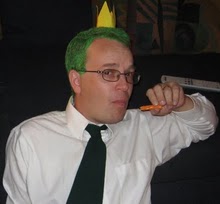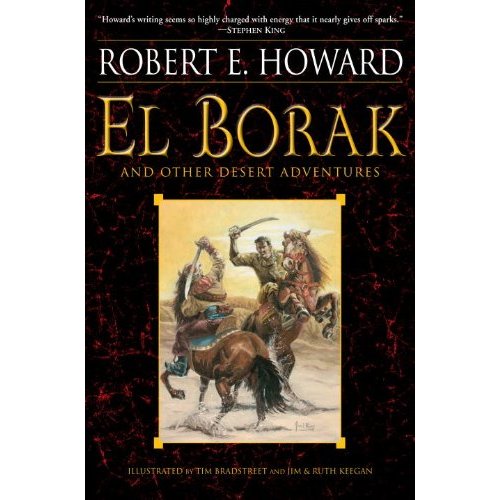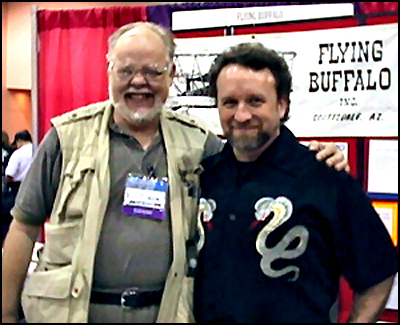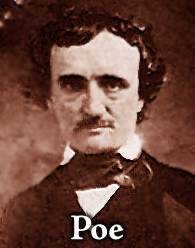Tuesday, March 30, 2010
posted by Deuce Richardson

My, how time flies. It seems just the other day that I became aware of Grognardia, the fine site owned and operated by James Maliszewski. Suddenly, I find that Grognardia is celebrating its second anniversary and that the industrious Mr. M has cranked out thirteen hundred and nineteen posts in those seven hundred and thirty-one days. As a fellow bloviator, I can testify such is no mean feat.
As I’ve noted before, Grognardia is not just for those who enjoy old-school RPGs. James’ “Pulp Fantasy Library” series of reviews should be read by any fan of the sub-genre. His most recent review (and one of his best) looks at REH’s own “Dark” Agnes de Chastillon. You can see [redacted]’s comments below the review.
Happy birthday, Grognardia.
Wednesday, February 10, 2010
posted by Deuce Richardson

Over at National Review Online, friend of The Cimmerian, John J. Miller, just posted an entry giving props to Grognardia. As some TC readers may already know, James Maliszewski’s web log is perhaps the finest of its kind devoted to role-playing games. Just a few weeks ago, Grognardia received plaudits from The L.A. Times. Even if you’re not of the role-playing bent, it is still worthwhile checking in on Grognardia from time to time. Maliszewski is a keen student and critic of the the pulp-style adventure we all love and his book reviews are some of the best on the ‘Net, in my opinion.
Monday, January 4, 2010
posted by Deuce Richardson

James Maliszewski
Yesterday, James Maliszewski, proprieter of the Grognardia website, as well as a Friend of the Cimmerian, wrote up a thoughtful birthday post regarding Tollers. Primarily, the entry is concerned with the influence of the appendices for The Lord of the Rings upon James’ early role-playing gaming career. It’s a worthy piece and I advise the RPG-inclined to check it out.
However, while not exactly a quibble, I think it worth mentioning that Tolkien did not in reality “box in” or over-explicate his sub-creation of Middle-earth as much as some surmise. If one excludes The Silmarillion and considers only The Hobbit and The Lord of the Rings, then JRRT left vast areas of his world unexplored and saw fit to let many metaphysical questions remain unanswered. The only region given a thorough going-over was north-western Middle-earth and even that had large areas about which little was revealed, whether in the tales themselves or in the appendices.
In contrast, Robert E. Howard had Conan personally visit many more far-flung regions (though it appears Aragorn came close to matching the Cimmerian in his own wanderings). In Howard’s (barely) post-Hyborian Age yarn, “Marchers of Valhalla,” he had Hialmar’s Æsir war-band nearly circumnavigate the globe on foot. In addition, while no official ‘appendix,’ REH’s “The Hyborian Age” essay goes a long way towards fulfilling that function.
Just something that occurred to me.
Saturday, November 21, 2009
posted by Deuce Richardson

James Maliszewski, the proprietor of Grognardia and a Friend of The Cimmerian, has posted an article on The Escapist website. It is called “The Books That Founded D&D” and I found it quite interesting. I thought it worth some commentary.
Mr. Maliszewski starts his essay noting the various reasons why J.R.R. Tolkien should be dismissed as major influence upon the role-playing game that Gygax and Arneson developed. Most of the evidence used to back this up is cited from Gygax’s own writings. The fact that these writings date from before and after the threatened lawsuit by Tolkien Enterprises means very little, in my view.
Tolkien deeply influenced Dungeons and Dragons. That is my humble opinion and I stand by it. The Elves as portrayed in D&D would be far different if JRRT had never written his novel, The Lord of the Rings. The same for D&D dwarves. Double ditto for “orcs,” which species (with that particular appellation) would never exist, but for Tollers. Triple ditto for the “halflings” in the game (whom I always considered ridiculous, in game terms). All of that, however, is fodder for another blog entry. Now, let’s get to all the stuff that James Maliszkewski and I do agree on (more or less)…
(Continue reading this post)
Friday, October 30, 2009
posted by Steve Trout
I’m not that big a fan of heavy metal, Jack Black or video games, but for those who are, this might be of interest. Though they namecheck Frazetta,, but not Howard, in the wiki write-up, Howard’s influence is seen in some of the promo material. Another review here.
Wednesday, October 14, 2009
posted by Deuce Richardson

Jay Zetterberg of CPI/Paradox was kind enough to provide the REH devotees of the Official Robert E. Howard Forum with a sneak peek at the cover (see above) for the upcoming El Borak and Other Desert Adventures volume from Del Rey. Painted by the marriage-made-in-Valhalla artistic team of Jim and Ruth Keegan, the cover depicts Howard’s Francis X. Gordon engaged in a dispute with a denizen of the desert wastes. The Keegans had this to say:
“We see El Borak as an old-school, swashbuckling hero. While we try to keep the historical influences in mind — Richard Francis Burton, “Chinese” Gordon, and T. E. Lawrence, etc., we also try to imagine a never-to-be El Borak movie directed by Michael Curtiz, starring Douglas Fairbanks Sr., with a soundtrack by Erich Wolfgang Korngold. Cue the sun!”
(Continue reading this post)
Tuesday, April 14, 2009
posted by Leo Grin

The late Dave Arneson (left) at a convention with former REHupan (and currently popular writer) Mike Stackpole.
The death of Dungeons & Dragons co-creator Dave Arneson last week brings to a close another chapter in the early history of role-playing games. What perhaps isn’t well known is the degree to which Arneson imbued D&D with a distinctly Howardian scarlet glow, an episodic sense of adventure that immediately reminds one of those original Weird Tales-era Conan stories. Here is Indy Cavalier, writing about Arneson in The Cimmerian V4n5 for October 2008:
Dave Arneson — D&D’s other creator, who has habitually avoided the spotlight shining on Gygax — also credits Howard’s Conan as an influence. Arneson was a tabletop miniatures wargamer who expanded on Gygax’s Chainmail miniatures rules, giving personalities and statistics to the small lead soldiers who delved into a keep to steal supplies. Arneson says his part in creating a breakthrough in the wargaming/fantasy aspects of role-playing (and the mapped-out dungeon) happened thusly: “I had spent the previous day watching about five monster movies on Creature Feature weekend, reading a Conan book (I cannot recall which one but I always thought they were much the same), and stuffing myself with popcorn, doodling on a piece of graph paper.” At Gen Con 1995, I asked Mr. Arneson directly about Howard’s influence on the creation of Dungeons & Dragons. He said he had read the first six books in the Conan series and felt they were all pretty much the same. But he was attracted to the “looting, pillaging and killing” aspect of the Conan character, and “the hero fighting critters.”
“The hero fighting critters.” That’s the kind of playfulness that lies at the heart of the success of D&D, and of RPGs in general, over the last forty years. Sometimes I feel that modern fantasy fiction has lost much of that, concerned as it is with portraying realistic civilizations awash in political intrigue and bitter anti-heroes at the expense of both heroes and critters. In a way, fantasy is currently in its dystopian phase, where every sub-created world reeks of Blade Runner-esque decay and dissolution. I think the time is ripe for a recalibration towards a less bleak and more traditionally robust civilizational worldview.










